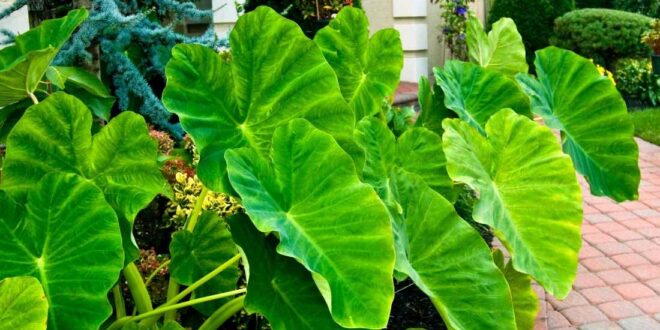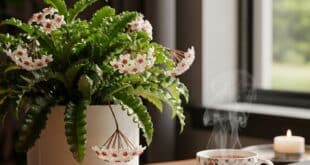Meet The Elephant Ear Plant
Elephant Ear Plant, with its gigantic, impressive leaves and tropical aesthetic, is a dazzling plant in the world of greenery that captivates plant enthusiasts. These plants, which resemble a giant elephant’s ear, can transform any space—indoors or outdoors—into a lush, exotic paradise. Whether in your garden or inside your home or office, it will suit any place perfectly. Who wouldn’t want a tropical atmosphere?
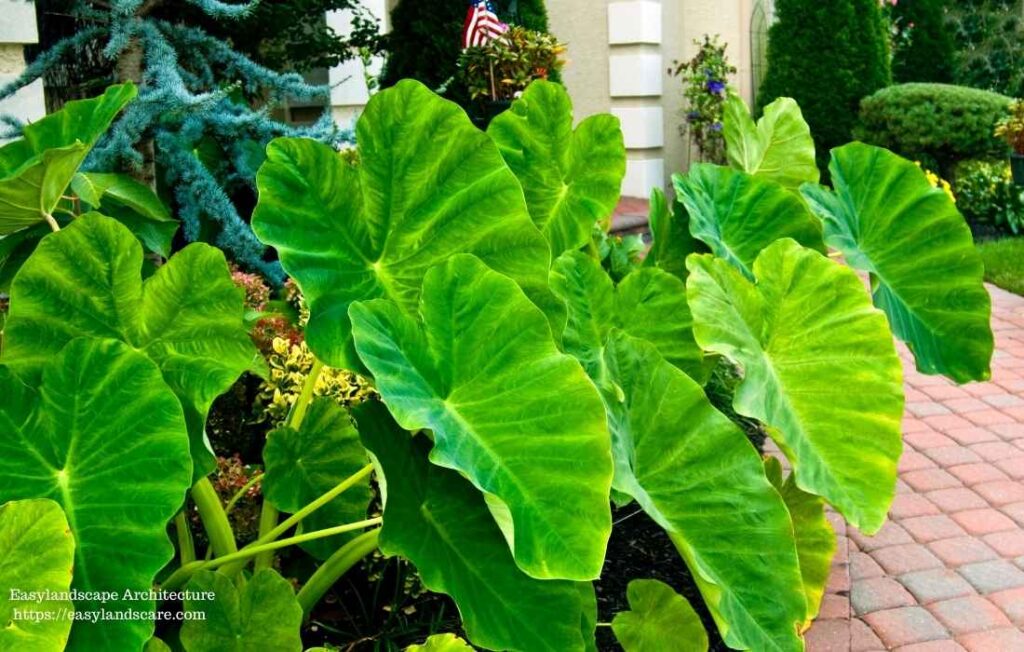
In this article, we will explore everything you need to know about the Elephant Ear Plant—its origins, popular varieties, care tips, and how to use it decoratively. Let’s dive into the enchanting world of these tropical beauties!
What is an Elephant Ear Plant?
The Elephant Ear Plant gets its name from its large, ear-shaped leaves that can range from heart-shaped to arrow-shaped or shield-like. These plants belong to several genera, including Alocasia, Colocasia, and Xanthosoma, each offering different characteristics.
- Size: Leaves can range from a foot long in smaller indoor varieties to several feet in length for outdoor types.
- Leaf Texture: The foliage can be smooth and glossy or matte and velvety, depending on the species.
- Stems: Thick, sturdy stems (petioles) support the leaves, adding to their dramatic appearance.
While some Elephant Ear species are grown for their stunning foliage, others—like Colocasia esculenta (Taro)—are cultivated for their edible tubers.
Origins of the Elephant Ear Plant

Elephant Ear Plants are native to tropical and subtropical regions across the globe. Their origins highlight their adaptability to warm, humid climates:
- Alocasia: Native to tropical Asia and Australia, known for upright growth and intricately patterned leaves.
- Colocasia: Originates from Southeast Asia and India. Colocasia species, such as Taro, are often grown for their edible tubers.
- Xanthosoma: Hails from tropical America and the West Indies, featuring arrow-shaped leaves that can grow to impressive sizes.
This wide geographical distribution underscores the plant’s versatility and ability to thrive in various tropical environments.
Popular Types of Elephant Ear Plants
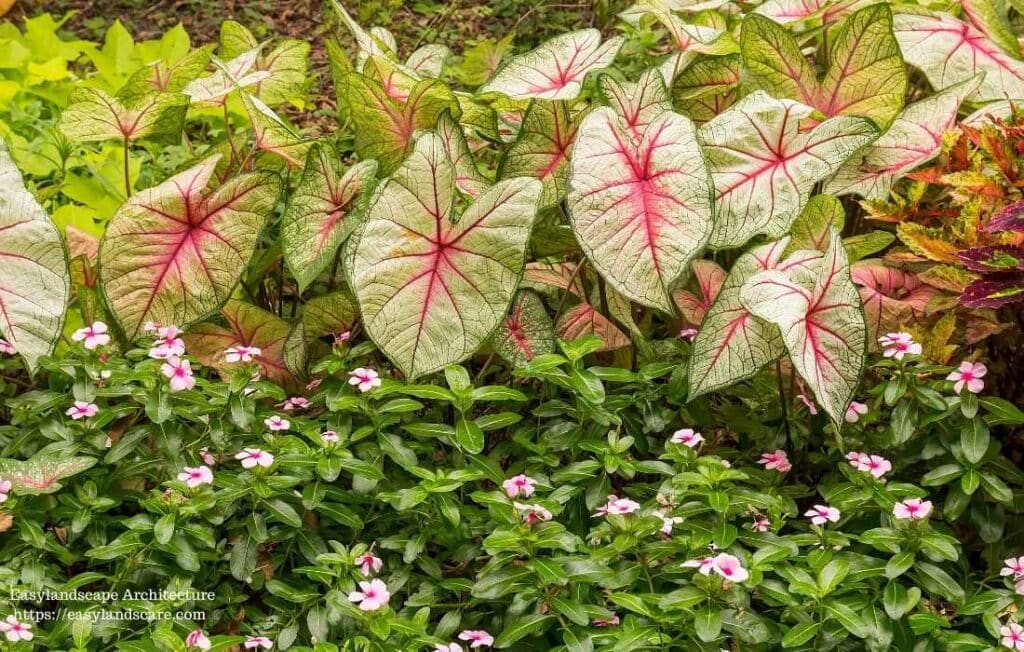
The term “Elephant Ear Plant” encompasses a variety of species, each with distinct features. Below are some of the most popular genera and species:
Alocasia
Known for its upright growth and unique leaf patterns, Alocasia includes species such as:
- Alocasia macrorrhizos (Upright Elephant Ear): Features large, glossy green leaves.
- Alocasia zebrina (Zebra Plant): Known for its striped stems and striking foliage.
- Alocasia amazonica: A hybrid with bold, dark green leaves and white veins.
- Alocasia polly (African Mask Plant): Compact and perfect for indoor growing.
Colocasia
Often referred to as Taro, Colocasia species have heart-shaped leaves that often droop. Popular cultivars include:
- Colocasia esculenta: The classic Taro plant, grown for its edible tubers and foliage.
- ‘Black Magic’: Features deep purple, almost black leaves.
- ‘Mojito’: Boasts speckled green and purple foliage.
Xanthosoma
Xanthosoma species typically have arrow-shaped leaves and thrive in warm, humid conditions. A notable species is:
- Xanthosoma sagittifolium (Arrowleaf Elephant Ear): A large plant with dramatic, shield-shaped leaves.
Leaf Variations and Aesthetic Appeal
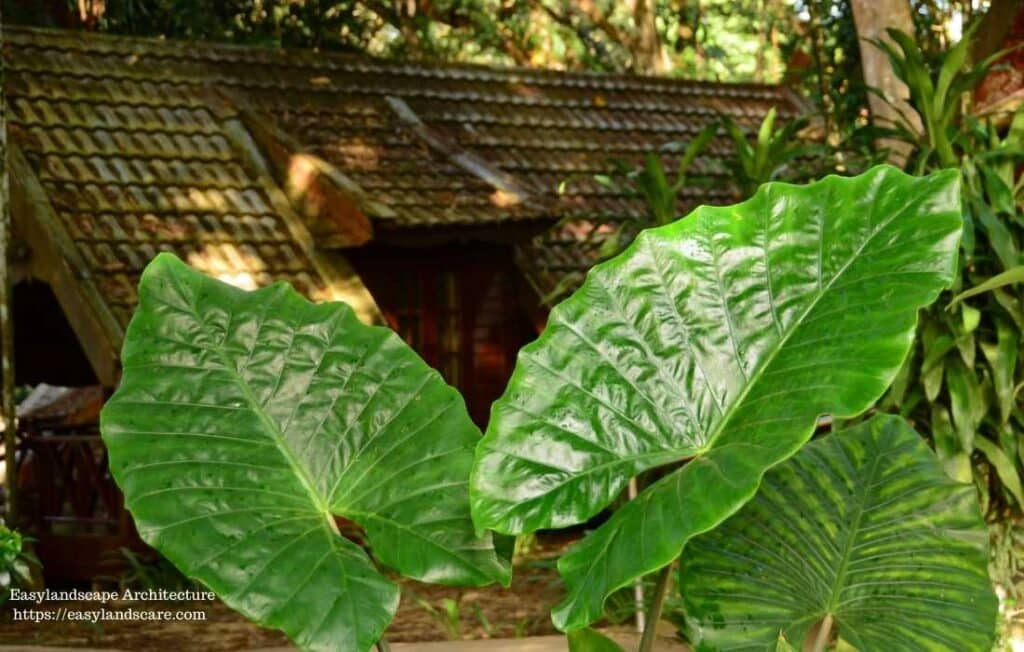
Undoubtedly, the leaves of the Elephant Ear Plant are the main feature that sets it apart from other plants. These plants display a variety of colors, patterns, and textures. This is precisely why the Elephant Ear Plant is often favored by interior designers and home décor professionals. Think of it this way—even though the Peace Lily has beautiful flowers, it won’t make as much of a visual impact as the Elephant Ear Plant.
- Colors: From deep greens and purples to vibrant reds, bronzes, and variegated forms.
- Patterns: Striking stripes (e.g., Alocasia zebrina) or intricate veining (e.g., Alocasia amazonica).
- Textures: Smooth and glossy or matte and velvety.
How to Care for Elephant Ear Plants
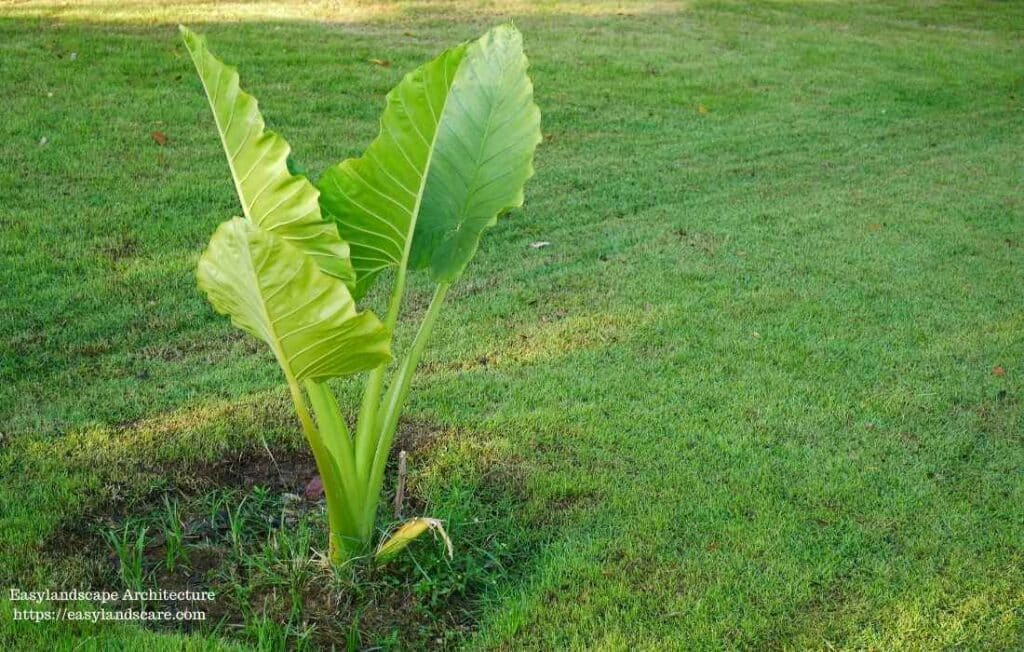
Caring for an Elephant Ear Plant involves understanding its tropical origins. While specific needs vary by species, the following care tips will generally help your plant thrive:
- Light Requirements
- • Indoors: Bright, indirect light is ideal. Position the plant near an east or west-facing window.
- • Outdoors: Some Colocasia varieties can tolerate full sun, as long as they receive consistent moisture. Avoid harsh, direct midday sunlight, which can scorch the leaves.
Watering Needs
- Keep the soil consistently moist, especially during the growing season.
- Water thoroughly when the top inch of soil feels slightly dry.
- Reduce watering in the dormant winter months.
Temperature and Humidity
- Ideal temperature: 65–85°F (18–29°C).
- High humidity is crucial. Use a humidifier, pebble tray, or misting to maintain humidity levels indoors.
Soil and Pot Selection
- Use rich, well-draining soil. A mix of potting soil, compost, and perlite works well.
- Choose a pot with drainage holes to prevent waterlogging.
Fertilizing
- Feed with a balanced liquid fertilizer every 2–4 weeks during spring and summer.
- Reduce fertilization during the dormant season.
Growing Elephant Ear Plants Indoors vs. Outdoors
Indoor Growing
- Choose compact varieties like Alocasia polly.
- Provide bright, indirect light and high humidity.
- Use decorative pots to enhance their aesthetic appeal.
Outdoor Growing
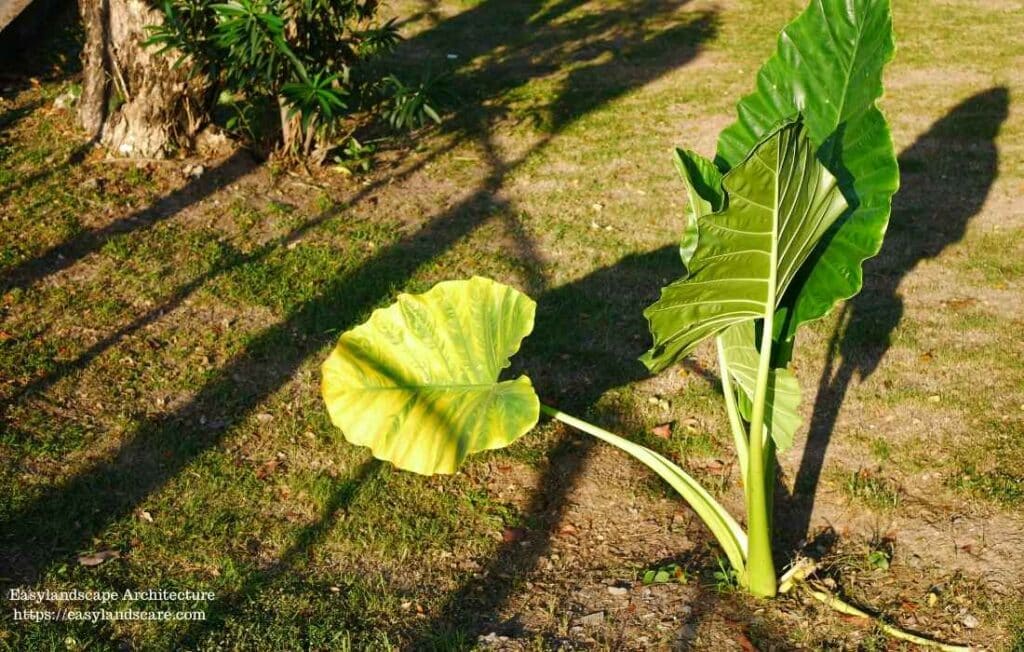
- In warm climates, Elephant Ears can grow to their full potential, reaching heights of 6–10 feet.
- Colocasia thrives in moist or boggy conditions, making it ideal for water gardens.
- In cooler climates, overwinter the tubers indoors and replant in spring.
Common Problems and Solutions
Even though Elephant Ear Plants are relatively hardy, they can face a few challenges:
- Leaf Burn: Caused by direct sunlight. Move the plant to a shadier spot.
- Yellowing Leaves: Often due to overwatering or underwatering. Adjust your watering routine.
- Drooping Leaves: Indicates inconsistent watering. Check soil moisture levels.
- Pests: Watch for spider mites, aphids, and mealybugs. Treat with neem oil or insecticidal soap.
- Fungal Diseases: Ensure good airflow and avoid overhead watering.
Are Elephant Ear Plants Toxic?
Yes, Elephant Ear Plants are toxic. They contain calcium oxalate crystals, which harm both pets and humans. Therefore, they should not be ingested or eaten. Symptoms of poisoning from the Elephant Ear Plant include mouth irritation, drooling, and vomiting. Since it’s not always possible to place the plant out of reach of pets and children, you need to be more cautious.
Decorating with Elephant Ear Plants
Indoors
- Create a tropical vibe by placing an Elephant Ear Plant in a decorative pot.
- Use it as a bold focal point in living rooms, offices, or entryways.
Outdoors
- Add dramatic foliage to garden beds, borders, or water features.
- Use large containers to create portable tropical displays on patios or decks.
FAQ: Frequently Asked Questions About Elephant Ear Plants
Are Elephant Ear Plants easy to grow?
Yes, Elephant Ear Plants are relatively easy to grow if you provide the right conditions. They thrive in warm, humid environments with consistent moisture and bright, indirect light.
Can Elephant Ear Plants grow indoors?
Absolutely! Species like Alocasia polly or Alocasia amazonica are great for indoor use. Just make sure they get bright, indirect light and high humidity.
How big do Elephant Ear Plants get?
The size depends on the variety. Indoor plants typically reach 2–4 feet tall, while outdoor plants can grow up to 6–10 feet with leaves spanning several feet.
How often should I water my Elephant Ear Plant?
Water when the top inch of soil feels slightly dry. Keep the soil consistently moist during the growing season, but avoid waterlogging.
Do Elephant Ear Plants go dormant?
Yes, in very cold climates, many Elephant Ear Plants can go dormant and even die back during the winter months. However, the tubers in the stems can survive without damage and come back to life in the spring.
Are Elephant Ear Plants toxic to pets?
Yes, Elephant Ear Plants contain calcium oxalate crystals, which are toxic to pets if ingested. Symptoms include drooling, vomiting, and oral irritation. Keep them out of reach of pets.
Why are my Elephant Ear Plant’s leaves turning yellow?
Yellowing leaves are often caused by overwatering, underwatering, or nutrient deficiencies. Check the soil moisture and adjust your watering routine.
Can Elephant Ear Plants tolerate full sun?
Some Colocasia varieties can tolerate full sun if they receive consistent moisture. However, most prefer bright, indirect light to partial shade.
How can I increase humidity for my indoor Elephant Ear Plant?
You can increase humidity by misting the plant regularly, using a humidifier, or placing a pebble tray filled with water under the pot.
What pests should I watch out for?
Common pests include spider mites, aphids, and mealybugs. Inspect the leaves regularly and treat infestations with neem oil or insecticidal soap.

